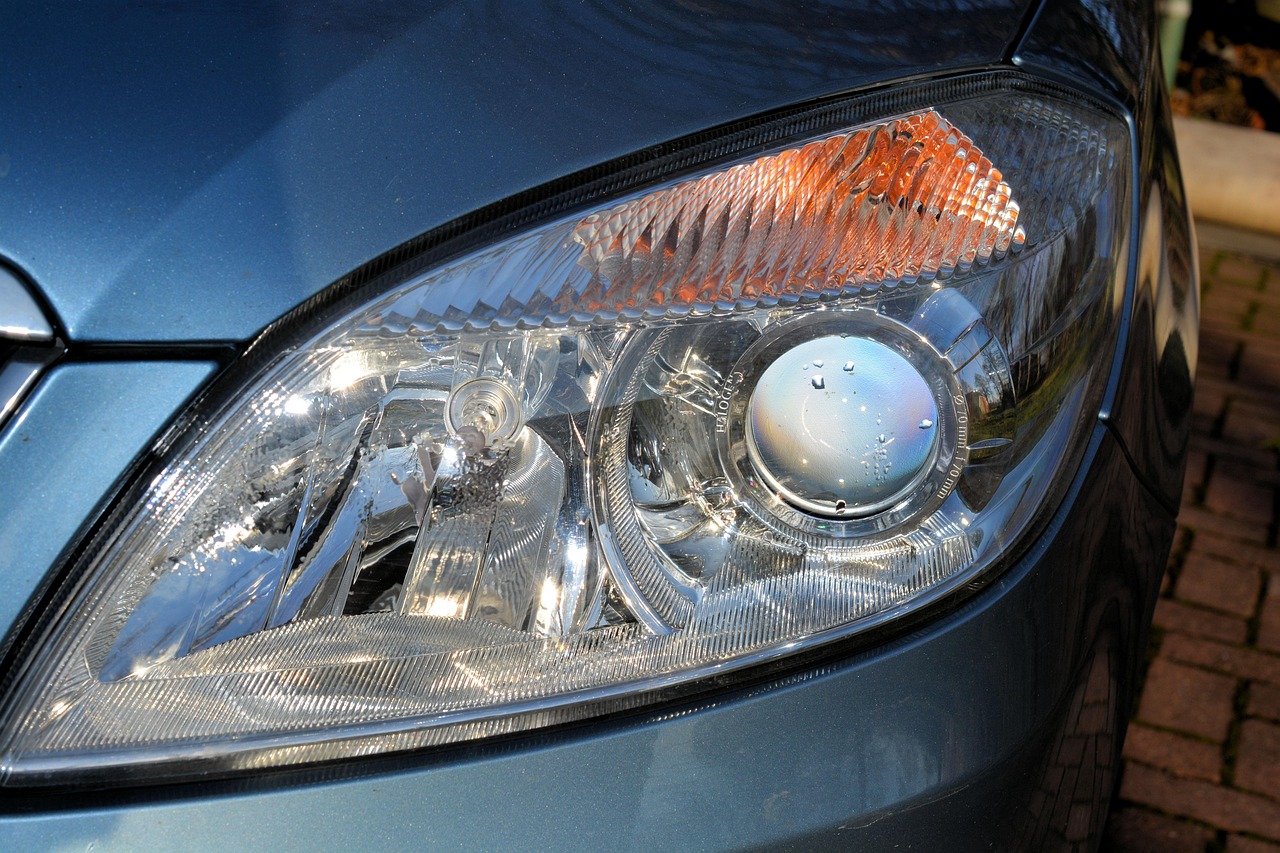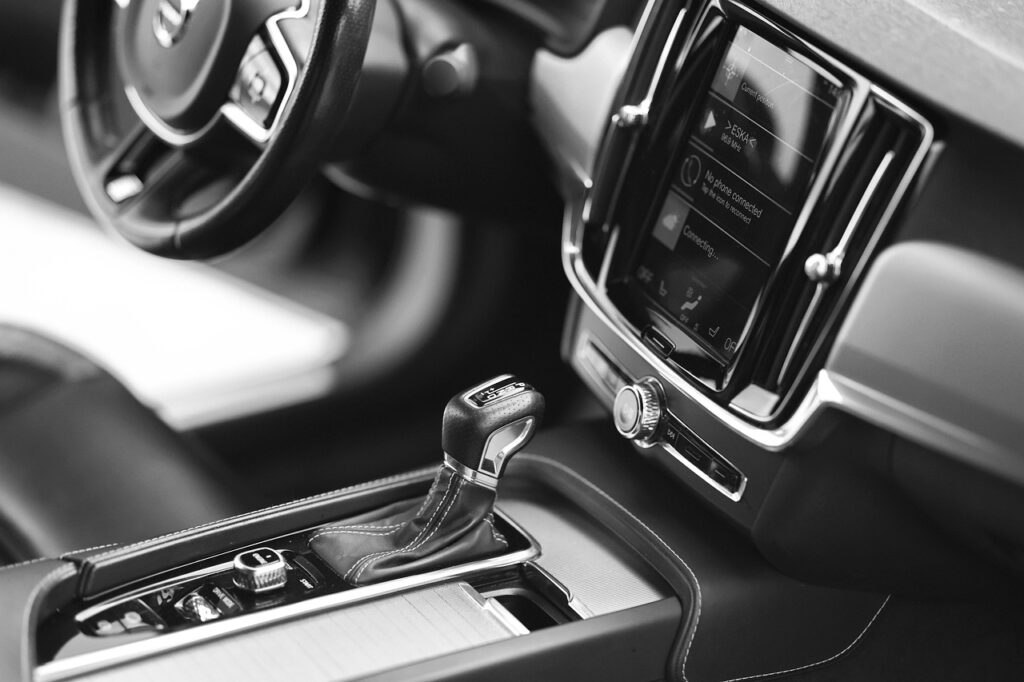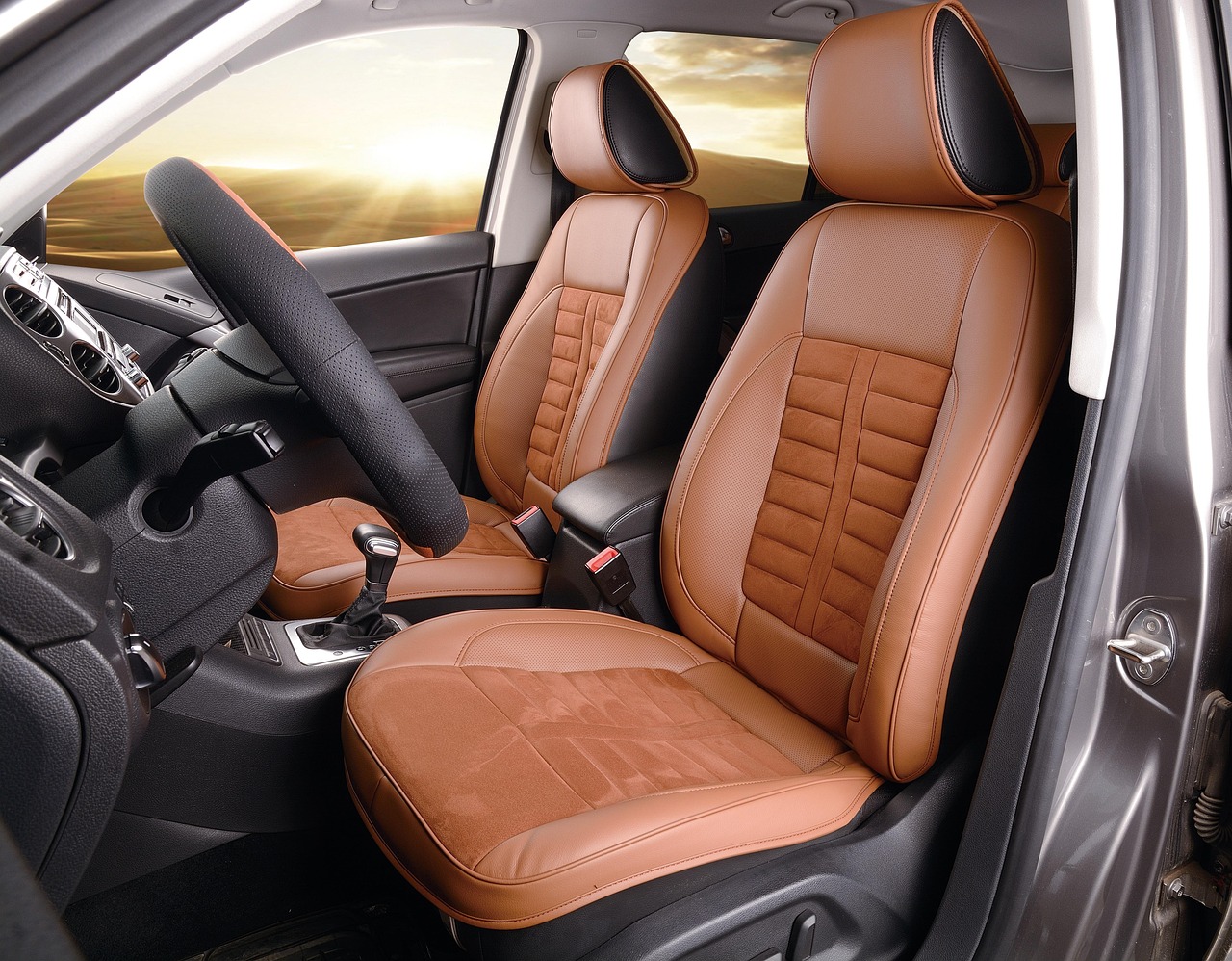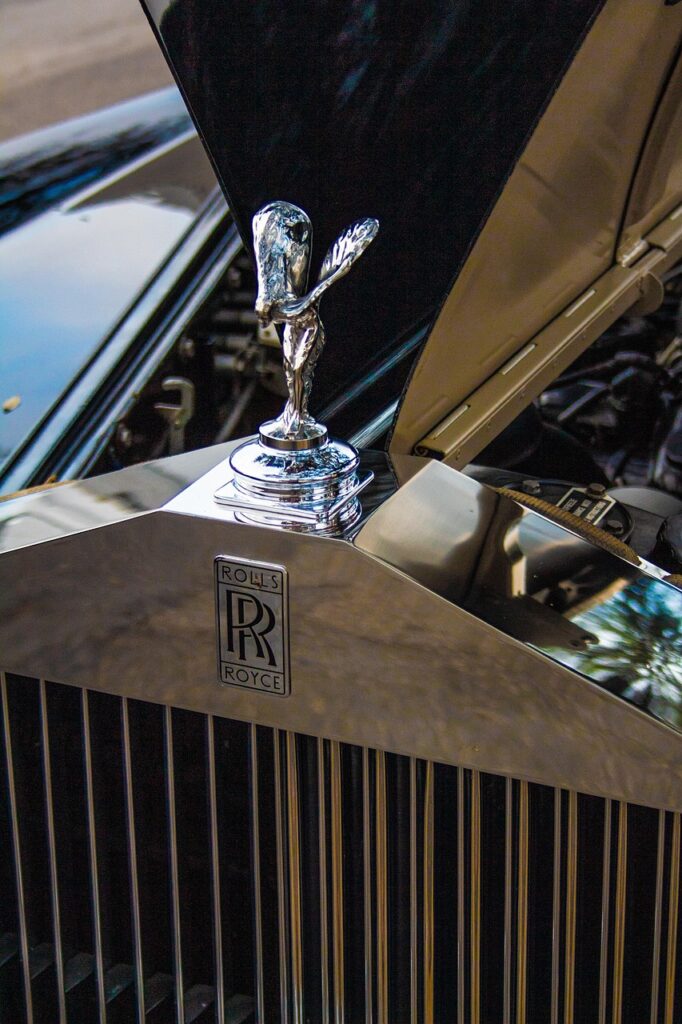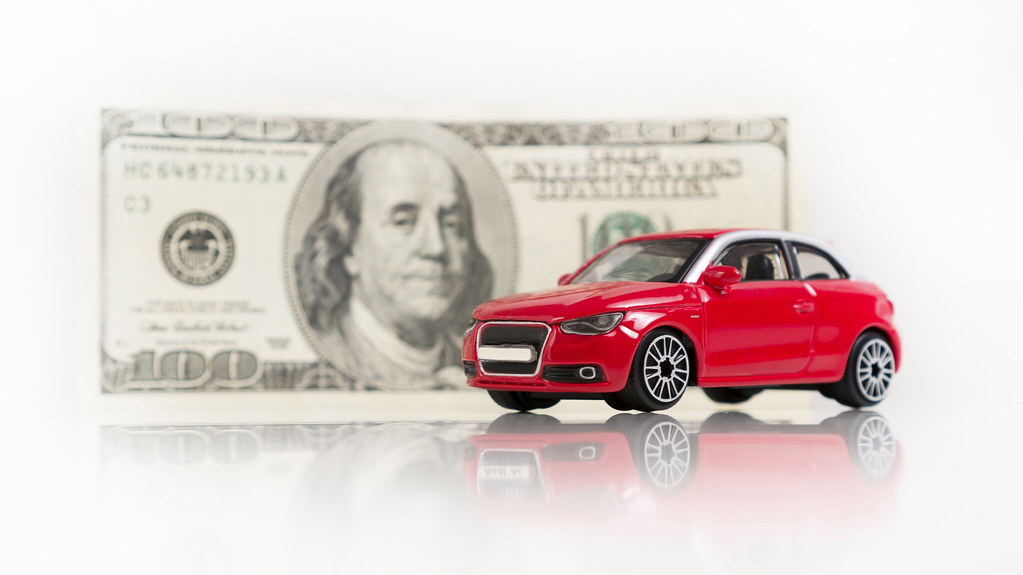
Ever miss the charm of old-school cars? It’s a question that resonates deeply with many automotive enthusiasts, and for good reason. While modern vehicles boast unparalleled safety, efficiency, and digital connectivity, they often lack some of the unique touches that made driving a genuinely fun and practical experience in the past. We’ve become accustomed to a world of touchscreens and advanced driver-assistance systems, yet a lingering sense of nostalgia for simpler, more tactile automotive design persists.
Vintage cars, with their sculpted steel and exposed gauges, offered something rare in today’s landscape of identical crossovers and digital dashboards. They told a story, not just through their aesthetic, but through their very functionality. These weren’t just modes of transport; they were mechanical marvels with distinct personalities, often integrating clever, low-tech solutions that enhanced the driving experience in unexpected ways.
In this deep dive, we’ll embark on a journey through automotive history, rediscovering some of the most ingenious and beloved features that have faded from the modern car. From elements that dramatically improved visibility to those that offered unparalleled tactile control, we’ll unpack why these classic characteristics still hold a special place in our hearts and why their absence is increasingly felt in today’s high-tech, yet sometimes less engaging, vehicles.
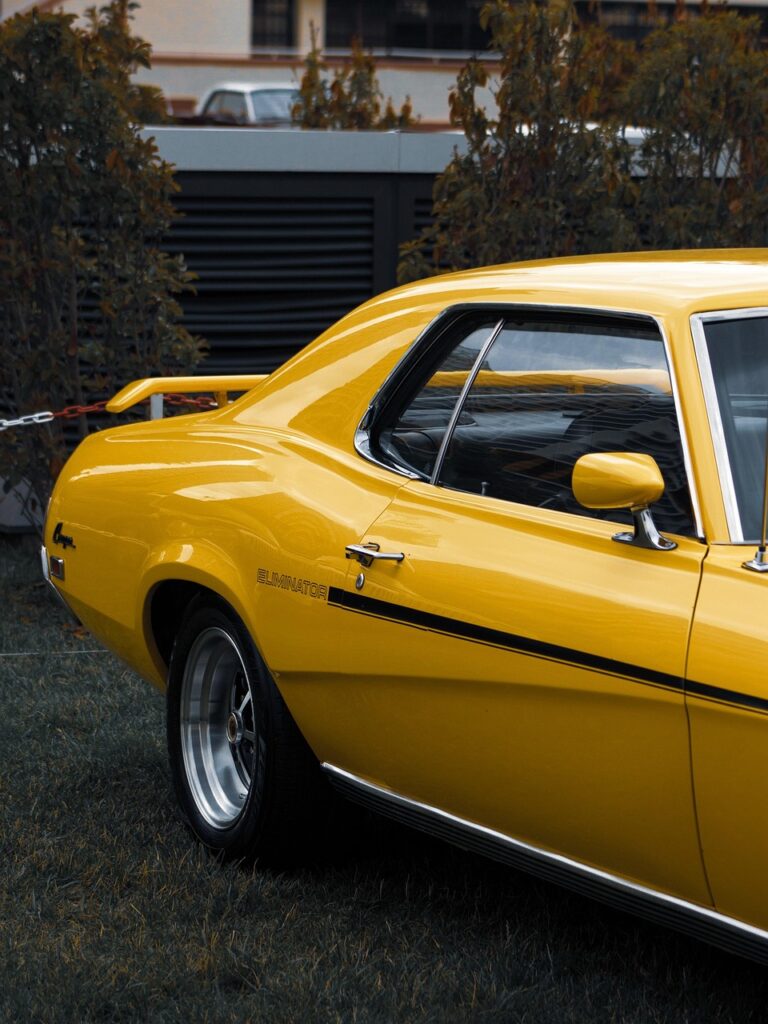
1. **Big Windows for Better Visibility**Imagine cruising down the highway, enjoying a near-panoramic view of the road and your surroundings. This was a hallmark of classic cars, where expansive visibility made driving not just safer, but considerably more enjoyable. These generous windows allowed drivers to truly connect with the world outside, making it easier to spot potential hazards, navigate complex environments, and simply admire the passing scenery.
The design ethos back then prioritized an open, airy cabin, giving drivers an unobstructed field of vision. This wasn’t just about comfort; it was a fundamental safety feature, relying on the driver’s natural ability to see rather than technological aids. The simplicity of a clear, broad view was a testament to design that put the human experience at the forefront.
Today, this feature has largely been sacrificed on the altar of modern safety and aerodynamics. Thick pillars and smaller windows are now common, designed for better crash protection and reduced drag. While these advancements contribute to overall structural integrity, they inadvertently create more blind spots, forcing drivers to rely on an array of cameras and sensors to compensate for what they can no longer see naturally. It’s a significant trade-off, balancing passive safety structures against the inherent benefits of natural, unassisted visibility.
Read more about: From Dust to Dollars: Record-Breaking Classic Cars Unearthed from Barns and Forgotten Garages

2. **Round, Sealed Headlights**There was a time when headlight replacement was a straightforward affair, requiring no more than a few simple tools and a brief moment of your time. This convenience was epitomized by the round, sealed headlights that were a staple of classic cars. These units offered a charming simplicity: just pop out the old one and snap in a new unit. No fuss, no muss, and definitely no costly trips to the mechanic for a routine bulb change.
Beyond their practical maintenance, the circular shape of these headlights often contributed positively to a vehicle’s aerodynamics, allowing them to cut through the air smoothly. Moreover, many drivers found their appearance far more appealing. The round, sealed lights of yesteryear had a friendlier, less aggressive face, illuminating the road without appearing to intimidate other motorists. This design choice reflected a different era of automotive aesthetics, one that valued straightforward function wrapped in a pleasant form.
Contrast this with today’s car headlights, which are frequently integrated into intricate, complex assemblies. Replacing a modern headlight can indeed require specialized tools, advanced knowledge, or an expensive visit to a service center. While modern lighting technology offers superior illumination and energy efficiency, the convenience and genial aesthetic of the classic round headlight are often sorely missed. Perhaps a return to this practical, no-nonsense approach to illumination could offer a refreshing change.
Read more about: Beyond Billions: A Deep Dive into Bill Gates’ Unexpected Car Collection – From Rare Porsches to Eco-Friendly EVs and Everyday Rides
3. **Bumpers Made to Bump**Remember a time when a minor fender bender didn’t automatically mean a five-figure repair bill? Vintage car bumpers were built for precisely that purpose: to take a hit without causing major damage to the vehicle’s bodywork. These robust structures were designed to absorb impacts, offering a tangible layer of protection that often minimized the aftermath of low-speed collisions.
Consider the 1986 VW Scirocco, for instance, a classic example where its bumpers stood distinctly apart from the body, ready to absorb impacts head-on. This intelligent design philosophy made perfect sense from a practical standpoint; it meant that everyday scrapes and taps didn’t escalate into costly cosmetic repairs or structural damage. They were, quite simply, functional pieces of engineering rather than purely aesthetic additions.
Today’s vehicles, in their pursuit of seamless design and aerodynamic efficiency, largely feature sleek, integrated bumpers that blend smoothly into the car’s body. While undeniably attractive, this integration often comes at a cost: these bumpers frequently crack or sustain significant damage even from the slightest tap. Many drivers genuinely miss the days of sturdy, separate bumpers, yearning for a level of protection that was both effective and inexpensive to repair or replace. Reintroducing such old-school bumper designs could alleviate considerable headaches and save car owners a substantial amount of money in the long run.
Read more about: Inside the Urban Outlaw’s Garage: A Hollywood Legend’s Secret Porsche Collection Revealed
4. **Foot-Operated High Beam and Windshield Wiper Toggles**Before multifunction stalks became the norm, a clever, low-tech solution kept drivers’ hands firmly on the steering wheel while managing essential controls: foot-operated switches. The foot-operated high beam switch was a particularly nifty feature in older cars. With just a quick tap of the left foot, drivers could effortlessly flick between low and high beams, receiving an instant visibility boost without ever having to search for a dashboard button or steering column lever.
This hands-free approach wasn’t limited to headlights. Some vintage cars even incorporated foot-operated windshield wiper controls, allowing for simple, effective activation without diverting attention or hand movement from critical steering tasks. These innovative foot controls were far more than just cool gadgets; they were intelligent design choices that significantly enhanced driving safety by reducing potential distractions. There was no fumbling, no momentary loss of focus – everything was intuitively placed right there under your feet.
It’s a genuine shame that modern cars have largely abandoned this remarkably clever and safety-conscious setup. In an era where reducing driver distraction is paramount, the simplicity and intuitive nature of foot-operated controls offer a compelling argument for their comeback. After all, sometimes the older, more straightforward ways of doing things prove to be the most effective and safest solutions, proving that innovation doesn’t always have to be about complexity.
5. **Manual Handbrake Levers**The manual handbrake lever stands as a classic car feature that, while gradually fading from modern vehicle design, continues to hold a strong appeal for many drivers. These simple mechanical devices provide direct, unmistakable control over the parking brake. The act of pulling up the lever to securely park the vehicle, and then pushing the button to lower it for release, offers a tangible, reassuring connection to the car’s mechanics. There’s an undeniable sense of control and reliability that comes with this old-school approach.
Today’s cars frequently employ electronic parking brakes, activated by a mere button or switch. While these electronic systems undeniably free up interior space and offer a sleek, minimalist aesthetic, they often lack the physical feedback and the profound sense of peace of mind that a manual lever provides. Some drivers find electronic brakes to be somewhat finicky, and there’s a natural underlying concern about potential electrical failures, especially in critical situations.
The straightforward, purely mechanical nature of a manual handbrake instills a quiet confidence, particularly when parking on steep inclines or during unexpected emergencies. It’s a system that feels inherently robust and dependable. It’s truly no wonder that a significant number of car enthusiasts and practical drivers alike continue to yearn for the return of this no-nonsense, highly reliable feature, valuing its directness over the conveniences of modern automation.
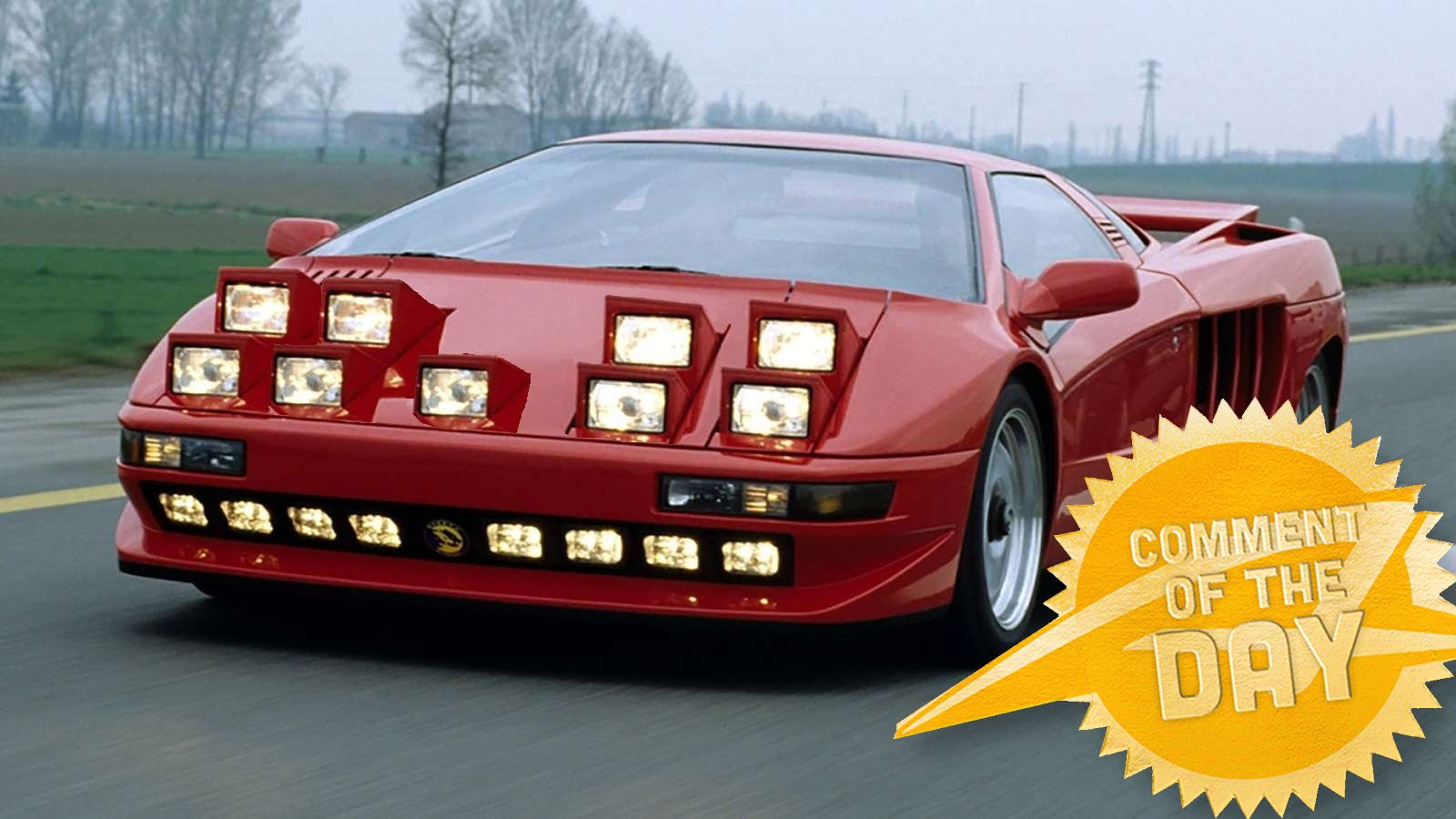
6. **Pop-Up Headlights**For a generation of car enthusiasts, pop-up headlights weren’t just a functional feature; they were the absolute epitome of cool in automotive design. These hidden gems possessed an almost magical quality, emerging from the car’s hood with a distinctive mechanical whir, transforming a sleek, dormant vehicle into one with a fierce, dynamic gaze. They added an unparalleled dash of flair and personality to vehicles, making them instant head-turners and objects of desire.
Classics like the Mazda RX-7 or the Chevrolet Corvette C5 proudly showcased these ingenious features, their charm lying not just in their striking visual effect but in the satisfying, almost theatrical, mechanical action as they rose to attention. This design allowed car manufacturers to achieve incredibly sleek and aerodynamic front profiles when the lights were off, while still providing the necessary illumination when darkness fell. It was a brilliant compromise between necessity and pure aesthetic ambition, speaking to an era when car design often prioritized fun and distinctive character over sheer functional minimalism.
Regrettably, pop-up headlights have vanished from the contemporary automotive scene. Advances in lighting technology, particularly the advent of brighter, more energy-efficient fixed LED clusters, rendered their mechanical complexity largely obsolete. Furthermore, new pedestrian safety regulations ultimately delivered the final blow to their existence, as exposed light assemblies were deemed safer in the event of a collision. While modern cars are brighter and more efficient, many gearheads still carry a torch for the unique magic of those rising lights, lamenting the loss of such an iconic and characterful design element.
Read more about: Revving Up Your Portfolio: 14 Once-Overlooked Vintage Cars Poised for Explosive Investment Growth

7. **Wing Windows for Ventilation**Before the widespread adoption of sophisticated air conditioning systems, wing windows were an ingenious and ubiquitous feature in classic cars, providing a highly effective method for natural ventilation. These small, triangular panes, positioned at the front of the main side windows, were designed to pivot open. This simple yet brilliant mechanism allowed drivers and passengers to precisely direct fresh air into the cabin, offering instant relief on warm days and a pleasant, controllable breeze.
The beauty of wing windows lay in their simplicity and versatility. Drivers could adjust them to channel airflow exactly where it was needed, creating a personalized cooling experience. This feature was particularly valuable for cooling car interiors without the need for energy-consuming air conditioning, and they also had the added benefit of reducing intrusive wind noise when partially opened at higher speeds. They represented a clever, low-tech solution to the perennial challenge of cabin climate control.
Automakers eventually phased out wing windows, primarily as a cost-cutting measure and in the pursuit of more streamlined vehicle designs to improve aerodynamics and fuel efficiency. However, their unique benefits, such as the ability to crack open a window just a sliver on rainy days or swing them wide open on scorching summer drives, are still missed by many. These small, pivoting panes offered a level of precise ventilation control that is largely absent from modern vehicles, reminding us that sometimes, older, simpler solutions offered truly superior comfort.
Continuing our journey through the captivating world of classic automotive design, we delve into more beloved features that once defined the driving experience, exploring their ingenuity and the reasons why their absence leaves a noticeable void in today’s high-tech landscape. These elements, though often simple, offered remarkable charm and practical solutions that resonated deeply with drivers and passengers alike.
Read more about: Buyer Beware: 8 SUVs That Are Known to Fail Frequently Before 100,000 Miles
8. **Front Bench Seats**For decades, the front bench seat was a quintessential fixture in American automobiles, transforming the car’s interior into a versatile and inviting space. These wide, plush seats provided comfortable accommodation for up to three people across the front, lending a distinct ‘living room feel’ that fostered a sense of togetherness. Families cherished their practicality, while couples often appreciated the close proximity they afforded during drives, making every journey a more communal experience.
The evolution of automotive interior design has largely seen the demise of this beloved feature, with individual bucket seats becoming the ubiquitous standard. Yet, for many enthusiasts, the charm of the bench seat remains undiminished. It wasn’t just about carrying an extra passenger; it was about facilitating easy conversation and contributing to a more social driving atmosphere. Some even argued that, in certain contexts, they offered a safer option for children by positioning them centrally, away from the doors.
While modern bucket seats offer enhanced bolstering and individual adjustability, the longing for the broad, uninterrupted expanse of a front bench seat persists. It represents a design philosophy where shared comfort and accessibility took precedence, creating a unique character that is fondly remembered and often missed in the segmentation of today’s cabins.
Read more about: Expert Insights: Luxury Cars You’ll Regret Buying Due to Hidden Costs and Reliability Issues
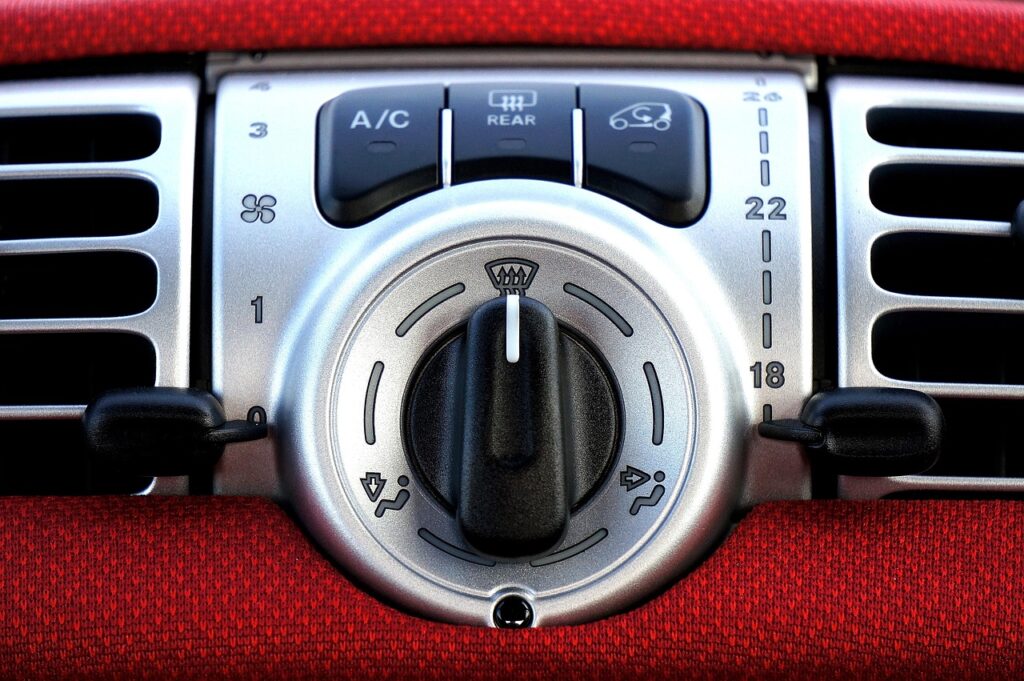
9. **Lap Climate Vents**Before sophisticated, multi-zone climate control systems became standard, older cars often featured ingenious lap climate vents, a simple yet remarkably effective solution for personalized comfort. These small openings, strategically positioned near the driver’s and passengers’ knees, were designed to blast cool air precisely where it was most needed. Vehicles like GM’s full-size models, the Toyota RAV4, Mazda MX-5 Miata, and even the robust Land Rover LR4, all once sported these nifty vents.
They provided immediate and direct relief on scorching days, proving particularly valuable in an era when powerful air conditioning was not yet a universal amenity. This straightforward method of cooling was both efficient and intuitive, giving drivers a tangible degree of control over their personal microclimate without relying on complex electronics or extensive system engagement. It represented a clever, low-tech answer to the perennial challenge of cabin temperature regulation.
Bringing back these straightforward lap vents could be more than just a nostalgic throwback; it could be a genuinely useful addition to modern vehicles. Their direct, efficient airflow offers a simple yet significant boost to driving comfort, proving that sometimes the most impactful innovations are not necessarily the most technologically complex, but rather those that cater directly to fundamental human needs.
Read more about: Unveiling the Powerhouse: Exploring the Foundational Strengths Behind America’s Advanced Naval Capabilities

10. **Ignition Keys**The humble ignition key holds a remarkably special and symbolic place in the annals of automotive history. These small, precisely cut pieces of metal once represented the tangible power to awaken an engine, bringing a vehicle roaring to life with a satisfying turn. Drivers cherished the tactile sensation of inserting the key into the ignition and twisting it, a physical ritual that forged a direct, mechanical connection to their machine. This simple act imbued each journey with a moment of anticipation, a genuine engagement with the vehicle before the wheels even began to turn.
Beyond their core functional role, traditional keys transcended mere utility to become deeply personal objects. Often adorned with unique keychains or decorative fobs, they served as miniature extensions of an owner’s personality and style. The satisfying weight of a key ring in one’s pocket was a constant, subtle reminder of the car’s presence, a silent badge of ownership that accompanied you everywhere. It fostered a bond that went beyond mere transportation.
While contemporary vehicles have largely embraced the convenience of push-button starts and keyless entry systems, this modernization often comes at the cost of that tangible interaction. Modern systems, despite their undeniable ease, can sometimes lack the profound physical feedback and the inherent sense of control that was intrinsically linked to the simple act of turning an ignition key. Many enthusiasts still yearn for that lost ritual, finding deeper satisfaction in the hands-on engagement of an older era.
Read more about: Signal Lost? Expert Tips and Apps for Seamless Offline Navigation on Your Next Road Trip

11. **Replaceable Head Units**There was a time when upgrading or replacing a car’s audio system was a remarkably straightforward affair, offering drivers unparalleled freedom to customize their in-car entertainment. Car stereos, or head units, were designed to be modular. You could effortlessly pop out an old unit and slide in a new one, a simple process that didn’t require specialized tools or lengthy workshop visits. This allowed owners to easily enhance their audio experience or replace a malfunctioning radio without considerable hassle or expense.
This era of easy customization stands in stark contrast to today’s automotive landscape, where infotainment systems are frequently deeply integrated into the vehicle’s dashboard and electronic architecture. These complex, often proprietary, systems are notoriously difficult, if not impossible, to swap out without extensive and costly modifications. This integration, while creating a seamless dashboard aesthetic, has effectively removed the power of choice from the driver, limiting their ability to personalize or upgrade their car’s technology as easily as they once could.
Many car enthusiasts vividly recall and deeply miss the days of the aftermarket stereo, reveling in the ability to select from a vast array of fancy units boasting large displays and a multitude of extra features. Today’s built-in screens, while functional, don’t always satisfy the diverse preferences of all drivers. The idea of replaceable head units, or even novel concepts like using a personal tablet as the primary interface, suggests a yearning for that lost flexibility—a blend of current technological needs with the adaptable, driver-centric approach of the past.
Read more about: From Dust to Dollars: Record-Breaking Classic Cars Unearthed from Barns and Forgotten Garages

12. **Ashtrays and Cigarette Lighters**Once ubiquitous fixtures in nearly every vehicle, ashtrays and cigarette lighters were standard features designed to cater to both smokers and, perhaps surprisingly, non-smokers alike. The built-in ashtray provided a discreet and safe receptacle for disposing of ash and cigarette butts, maintaining a tidy cabin environment. Complementing this, the cigarette lighter offered a swift and reliable means to ignite smokes, or, in a broader sense, provide a convenient source of heat for various small tasks. These practical add-ons were once so commonplace that their absence in modern vehicles often prompts a moment of mild surprise or nostalgia for those who remember their utility.
Despite their historical association with smoking, a habit that has significantly declined, these features continue to hold surprising value in contemporary applications. An ashtray, once filled with embers, now serves as an ideal, easily accessible compartment for storing small items such as loose change, mints, or keys, keeping them from cluttering the main console. More significantly, the cigarette lighter socket has undergone a remarkable transformation; it is now an indispensable power source, providing the crucial 12-volt output required for charging smartphones, powering navigation devices, operating portable air compressors, and a myriad of other modern gadgets.
Indeed, some car enthusiasts actively seek out vintage models specifically for these nostalgic touches, appreciating their original design and repurposed utility. While the primary function for which they were initially conceived has largely faded, the enduring practicality and adaptable nature of these classic car elements underscore a timeless lesson: good design, even from a bygone era, often finds new and unexpected ways to remain relevant and useful in a changed world.
Read more about: Mind Blown: 15 Old School Car Features Kids Today Would Seriously Never Get (And Why We Kinda Miss Them!)
13. **Hood Ornaments**Hood ornaments, once elegant symbols of prestige and personality, graced the leading edge of many classic automobiles, transforming mere vehicles into rolling works of art. These captivating mascots, perched proudly atop the hood, ranged from Jaguar’s iconic leaping cat to Rolls-Royce’s ethereal Spirit of Ecstasy. Far from being purely decorative, some of these intricate emblems even integrated functional elements; for instance, the ’56 Rover 90’s ornament cleverly housed buttons that allowed drivers to check vital oil levels directly from the dashboard—a brilliant fusion of form and function.
Regrettably, the era of the hood ornament drew to a close as safety concerns, particularly regarding pedestrian impact, and the automotive industry’s drive toward more streamlined, aerodynamically efficient designs gained prominence. These charming, distinctive symbols were gradually pushed off modern vehicles, leading to a homogenization of front-end aesthetics. The unique flair and individual character they imparted became a casualty of evolving regulations and design trends, leaving many modern cars feeling somewhat anonymous in comparison.
Reintroducing hood ornaments, perhaps with a contemporary twist, could inject a much-needed dose of individuality and panache back into today’s often cookie-cutter automotive designs. Imagine cruising down the street, your vehicle instantly recognizable by its unique, custom emblem leading the way. This isn’t just about recapturing a lost aesthetic; it presents an opportunity for innovation. These resurrected ornaments could incorporate new technologies, such as LED-lit logos for dramatic visual impact or even smart elements displaying real-time vehicle information. Automakers would be wise to consider this blend of classic cool and modern utility, recognizing that sometimes, the spirit of the past holds the key to a more engaging future.
Read more about: Beyond the Screen: Deconstructing the Animated World of ‘9’ and the Enduring Power of the Number Nine

14. **T-Tops**In the vibrant automotive culture of the 1970s and 1980s, T-Tops were undeniably the epitome of cool, offering a distinctive blend of open-air exhilaration and closed-car practicality. These ingenious removable roof panels gave drivers the ultimate flexibility: easily pop them off to savor the freedom of cruising with the wind playfully tousling your hair, or securely snap them back into place to enjoy the full protection from the elements. This nifty feature imbued muscle cars and sports coupes alike with an undeniable dash of style and a captivating versatility that set them apart.
Beyond their considerable aesthetic appeal, T-Tops offered several practical advantages that distinguished them from full convertibles. Crucially, they allowed the car to retain a significant degree of its structural integrity, an important factor for both safety and driving dynamics. This meant better chassis rigidity, reduced flex, and often, a more secure feeling compared to fully open-top vehicles. Furthermore, T-Tops were generally easier to maintain and less prone to the wear and tear associated with complex soft tops, offering a more robust open-air solution. It’s little wonder that gearheads continue to pine for these groovy roof cutouts, remembering their perfect balance of fun and functional engineering.
The disappearance of T-Tops from the contemporary automotive scene is largely attributed to evolving safety standards, increased production costs, and a broader shift towards sunroofs and panoramic glass roofs. However, their unique ability to offer a semi-open-air experience without the full commitment or structural compromises of a convertible is still deeply missed. Bringing back T-Tops, perhaps with modern materials and improved sealing, could inject a much-needed dose of interactive fun and distinctive character into today’s often homogenous car designs, proving that some classic innovations remain timeless in their appeal.
**The Enduring Allure: Bridging the Past and Present**
Our journey through these classic car features reveals a profound truth: while modern vehicles excel in safety, efficiency, and connectivity, they often lack the unique character and tactile engagement that defined a bygone era. The charm of expansive windows, the simplicity of a manual handbrake, the personalized comfort of lap vents, or the sheer cool factor of T-Tops — these elements resonated with drivers on a deeper level. They tell a story of ingenuity and a different set of priorities in automotive design, one that often prioritized direct driver interaction and distinctive personality over seamless integration and digital abstraction.
Read more about: Beyond Nostalgia: 14 Classic ‘Boomer’ Cars Gen Z Drivers Are Steering Clear Of (And Why!)
Yet, the dream isn’t about ditching modern advancements entirely. It’s about finding a harmonious balance—the timeless style we crave without the mechanical uncertainties or safety compromises of true vintage ownership. This exploration highlights a burgeoning desire for vehicles that offer the emotional impact of classic design paired with contemporary reliability and comfort. Ultimately, the future of automotive passion may lie in reimagining the past, delivering the soul-stirring presence and thoughtful features of yesteryear, built for the demands of today’s world. This is where innovation truly honors heritage, ensuring that the best of both worlds can coexist on the open road.


